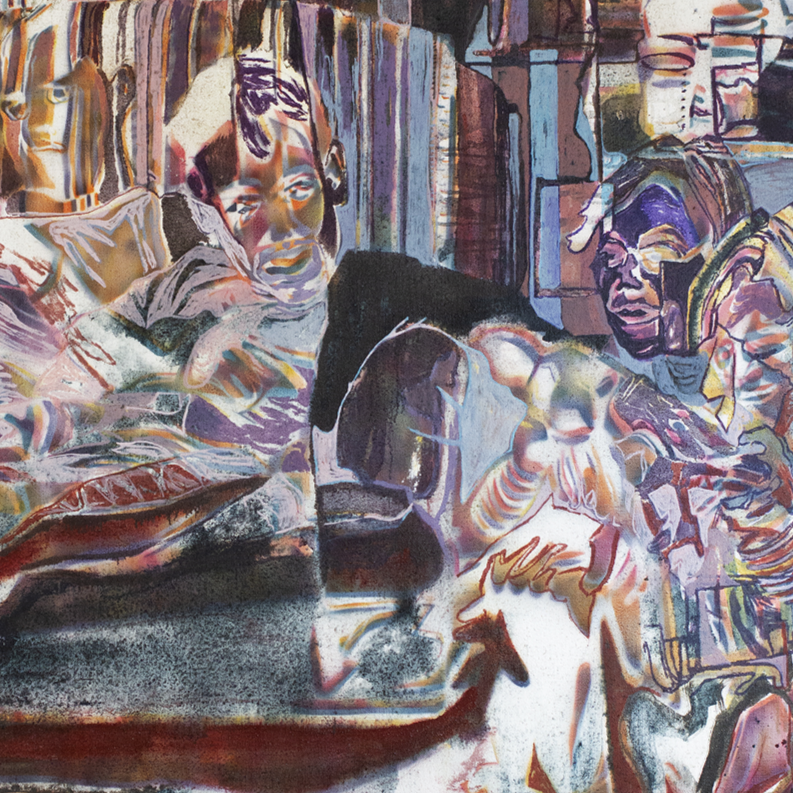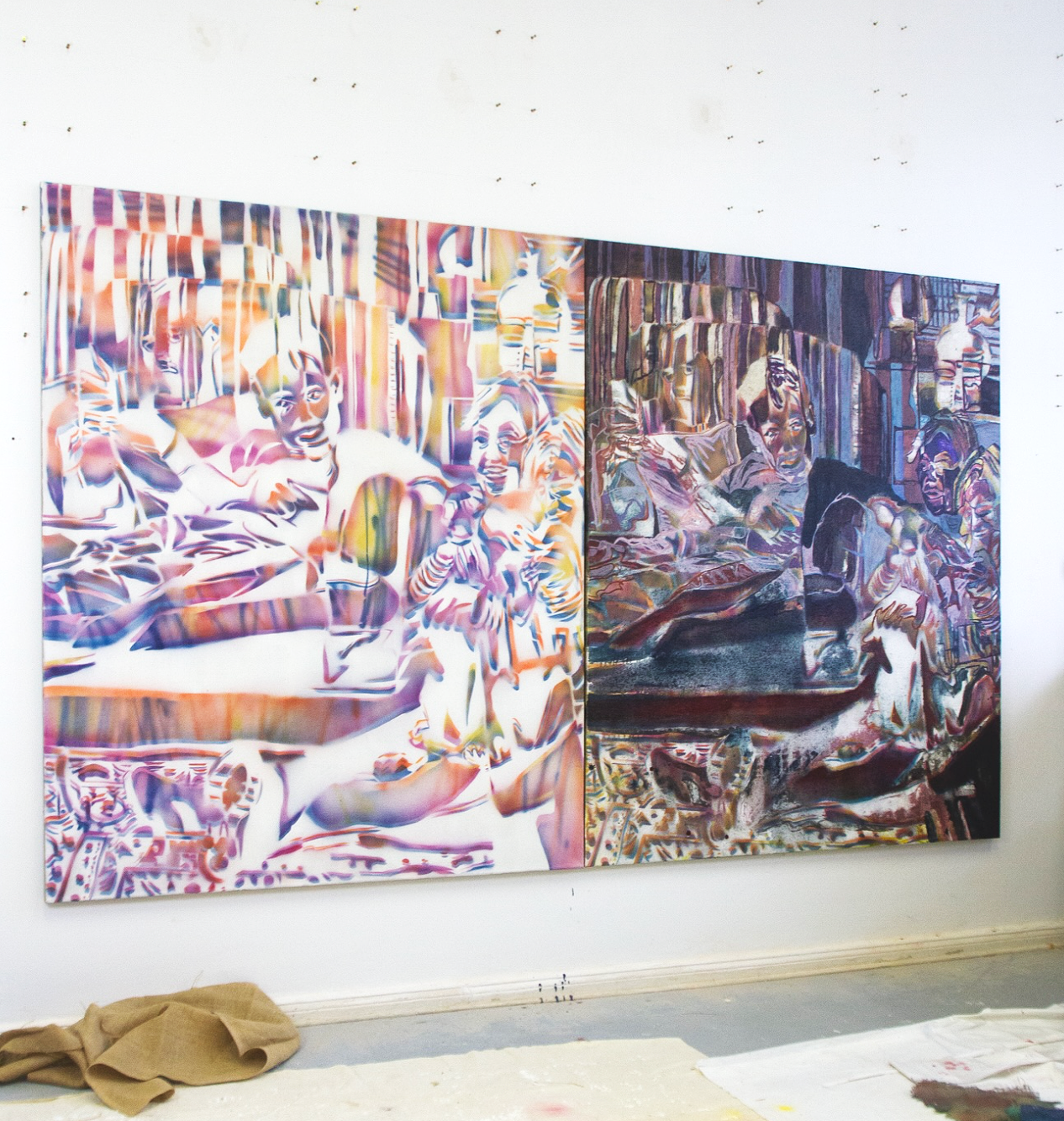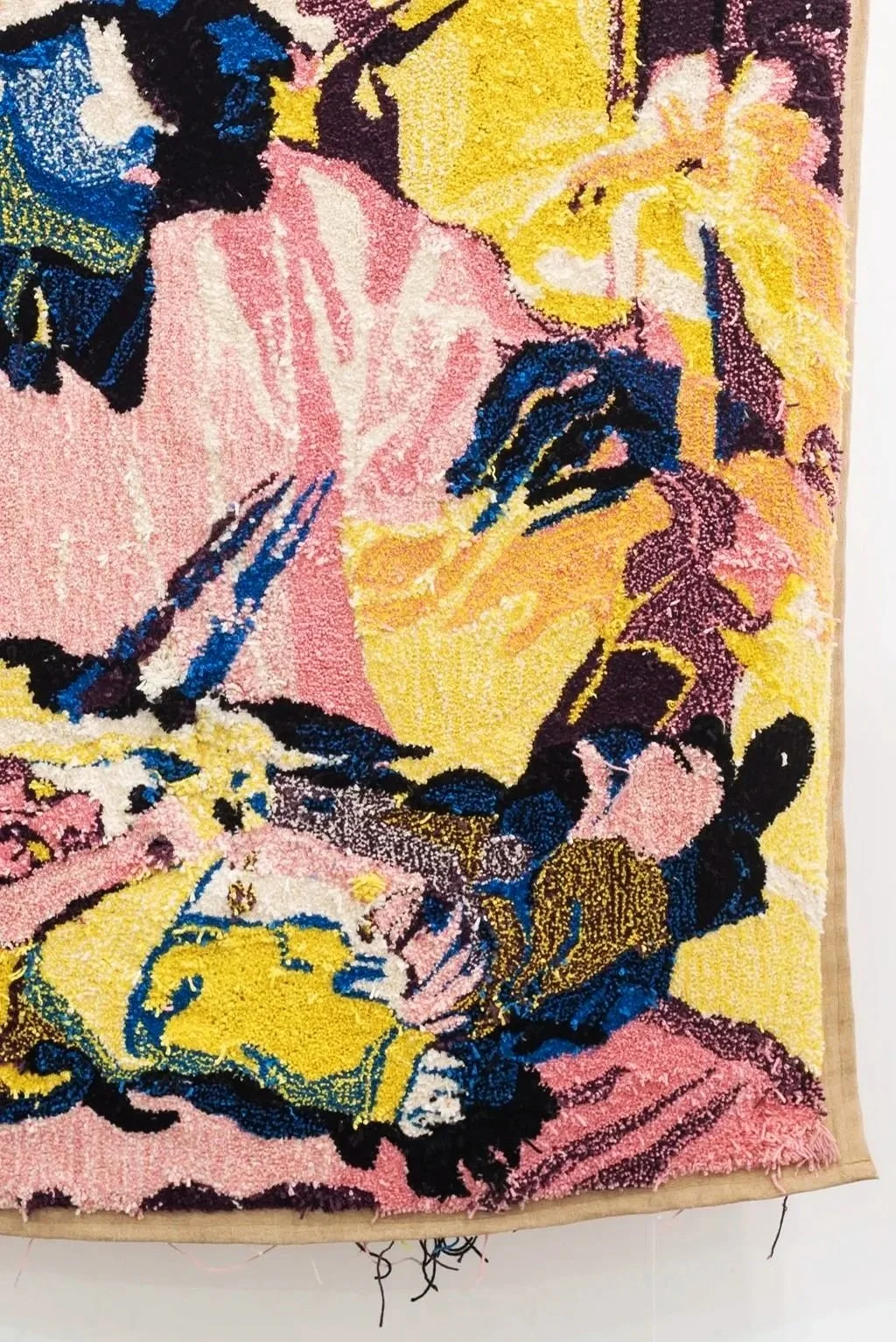 Image 1 of 3
Image 1 of 3

 Image 2 of 3
Image 2 of 3

 Image 3 of 3
Image 3 of 3




Arthur Laidlaw — Cut Glass
2021 — Watercolour on 300 gsm Hahnemühle paper
Framed with museum-grade glass
24 x 32 cm — EUR 950,00 (net)
For further artwork information or purchase, please email us at contact@massoumi.art or reach out via our contact form.
Arthur Laidlaw is a Berlin-based artist whose work moves between analogue photography, drawing, and painting to explore memory and the quiet weight of everyday moments. Using thousands of film photographs as his starting point, he captures intimate scenes of family and friends — small moments that feel fleeting yet deeply human.
He transforms these images into large-format drawings inspired by Renaissance cartoons, cutting and layering them onto hessian and spraying them with gouache and acrylic. The slight shifts and doubles that emerge give his works a gentle echo, reflecting how memories blur, repeat, and change over time.
Laidlaw’s practice examines how we remember places and experiences, and how fragile those impressions can be. Through subtle disruptions and careful layering, he invites viewers to consider the stories we preserve and the ones we lose.
2021 — Watercolour on 300 gsm Hahnemühle paper
Framed with museum-grade glass
24 x 32 cm — EUR 950,00 (net)
For further artwork information or purchase, please email us at contact@massoumi.art or reach out via our contact form.
Arthur Laidlaw is a Berlin-based artist whose work moves between analogue photography, drawing, and painting to explore memory and the quiet weight of everyday moments. Using thousands of film photographs as his starting point, he captures intimate scenes of family and friends — small moments that feel fleeting yet deeply human.
He transforms these images into large-format drawings inspired by Renaissance cartoons, cutting and layering them onto hessian and spraying them with gouache and acrylic. The slight shifts and doubles that emerge give his works a gentle echo, reflecting how memories blur, repeat, and change over time.
Laidlaw’s practice examines how we remember places and experiences, and how fragile those impressions can be. Through subtle disruptions and careful layering, he invites viewers to consider the stories we preserve and the ones we lose.











